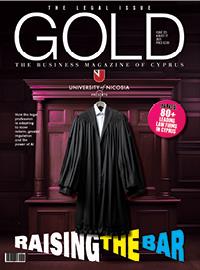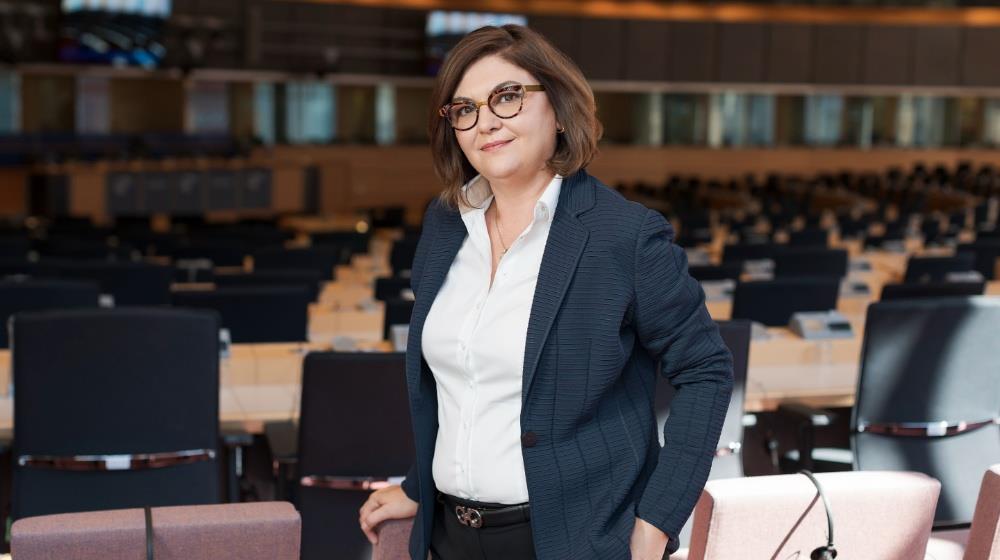The outgoing European Commissioner for Transport, Adina Vălean, discussed the strategy to escape the ‘Catch-22’ challenges around sustainable fuel production, the efforts being made to bolster the competitiveness of the EU’s maritime tech sector and the reasons for upgrading the transport network for military use, in an interview published in the May issue of GOLD magazine.
A main debate in the maritime sector continues to focus on the pressing need to develop new, low-emission fuels. How does the FuelEU Maritime Regulation address the challenge facing shipowners – who are hesitant to invest in such fuels due to cost concerns – and suppliers who are awaiting signs of clear demand before scaling up production?
Mindful of this ‘Catch-22’ challenge, we have striven to ensure a coordinated policy response, which is why our activity has been three-fold. First, the FuelEU Maritime Regulation creates the demand for clean fuels in the maritime sector, offering much-needed regulatory certainty to shipowners, operators and fuel producers. Operators must calculate the volume of renewable and low-emission fuels that they will need to comply. Having a clear idea of this demand will, in turn, enable fuel producers and distributors to plan the investment needed to meet it. This will happen through the requirements for putting minimum levels of clean fuels on the EU market, as required by the Renewable Energy Directive. Finally, through our Alternative Fuels Infrastructure Regulation, we ensure that the necessary infrastructure to deliver such fuels will be widely available in the major EU ports by 2030.
Beyond the regulatory framework, we have set up the Renewable and Low-carbon Fuels Alliance, which precisely looks at strengthening cooperation between shipping companies and fuel producers so that demand and supply are better matched. At the International Maritime Organization, the European Commission, together with EU Member States, is also working towards a ‘global fuel standard’. Having this would send a clear signal on future demand for sustainable fuels worldwide, triggering investment in supply facilities so that larger quantities can be produced.
A 2023 European Environment Agency report described the 2030 goal for a 55% GHG emission reduction as “likely but uncertain”, noting that lingering fossil fuel subsidies across the block are unlikely to be phased out by then. What is the Commission’s assessment of the matter?
I am glad to say that EU emissions are falling steadily. Net emissions fell by 32.5% in 2022 compared to 1990.
We are confident that the policies put in place over the last few years within the framework of the Green Deal and the Fitfor55 package have put us in a good position in terms of hitting our emission reduction targets by 2030. Of course, the results will also depend on the correct implementation of these measures and supporting this transition with the right investments. We do, indeed, need to keep an eye on fossil fuel subsidies. Energy subsidies increased in 2021-22, but this is mostly on account of temporary and exceptional measures to protect consumers from energy price increases triggered by Russia’s war of aggression against Ukraine and the subsequent energy market shocks. They are already being scaled back.
Despite recognising its strategic importance to the twin digital and green transition, there appears to be a lack of sectoral policy actions to support the challenges and needs of the maritime technology sector – shipyards, maritime equipment manufacturers and technology suppliers. Has there been any progress here and, if not, what is holding back policy actions?
The maritime technology sector has a fundamental role to play in enabling the waterborne transport sector’s transition to greater sustainability. Europe is home to some of the world’s leading marine equipment manufacturers and our shipyards are constructing high-value-added vessels. I do not think one can say there has been a lack of EU action in this area, especially over the last five years. Under this Commission, the EU has acted to support resilience and technological development within the sector. We have addressed research and innovation through initiatives such as the Zero-Emission Waterborne Partnership and financial support from the Innovation Fund; skills, through the Pact for Skills for shipbuilding; and defence, through the European Defence Fund and the EU Defence Industrial Strategy. In addition, the green agenda creates ample opportunities for EU shipyards and maritime equipment manufacturers. It will stimulate demand for green maritime technologies, innovative solutions and fleet renewal/retrofitting investments. We are, however, aware of challenges linked to industrial competitiveness and the lack of a global level playing field. I hope the next Commission will consider additional initiatives to ensure that the sector has what it needs to be competitive, to innovate and deliver the solutions needed for the twin transition.
Could you provide insights into how the EU Emissions Trading System is utilising revenues to fund future technologies, including the reduction of the cost disparity between fossil-free fuels and traditional fuels?
The EU Innovation Fund plays a key role in channeling funding towards projects that will demonstrate innovative low-carbon technologies. There is a clear commitment to dedicating 20 million EU ETS Allowances or almost €1.6 billion to the maritime sector by 2030, including projects facilitating research and innovation and the cost-effective production of renewable and low-carbon fuels. The Innovation Fund will also run specific auctions of ETS revenues for dedicated areas. EU Member States could also use their part of ETS revenues to support initiatives related to sustainable fuel technologies and production. The production and commercialisation of fuels such as methanol, ammonia, e-fuels, e-methane and biofuels are the focus of some projects, while others are looking at renewable energies in ports and innovative propulsion systems (fuel cell and wind sail).
How has the European Commission’s investment of €1.7 billion improved military mobility across the EU and contributed to strengthening Europe’s security and defence capabilities amidst growing geopolitical uncertainties?
My answer is straightforward: we have been able to support 95 dual-use projects in 21 Member States, covering all transport modes! Let me explain why we invested in this way: in the first hours of Russia’s war of aggression against Ukraine, we vowed that we would stand by Ukraine; this has not changed. It requires, first and foremost, providing military material to Ukraine. But we must also be ready and prepared to defend our own borders. When still a General, US President Dwight Eisenhower said, “You will not find it difficult to prove that battles, campaigns and even wars have been won or lost primarily because of logistics.” We must be able to move troops, material and food swiftly across the EU, from West to East, from North to South, to protect our external borders – in particular, our Eastern flank – if and when necessary. To do this, we need a transport network designed/upgraded for both civilian and military use. Motorway bridges must be able to carry higher loads. Road and rail tunnels must accommodate the axle load, widths and heights of military convoys. Through our investment, we have delivered on the Military Mobility Action Plan objective of improving the mobility of military capabilities within the EU.
Which specific maritime infrastructure projects have been prioritised for funding as part of the European Commission’s Military Mobility Action Plan?
If we look at the Military Mobility strand of the Connecting Europe Facility (CEF), where only ‘dual use’ transport infrastructure projects are eligible for funding, maritime projects accounted for 8% of the total funding budget and co-funding of roughly €145 million. The 14 projects selected were submitted by nine Member States and range from actions to better connect maritime ports with military bases in the hinterland – for example, by dredging canals or improving rail – to the construction of new quays and improvements to existing port infrastructure and the procurement of icebreakers for Baltic Sea ports.
(This article was first published in the May 2024 issue of GOLD magazine. To view it click here)









